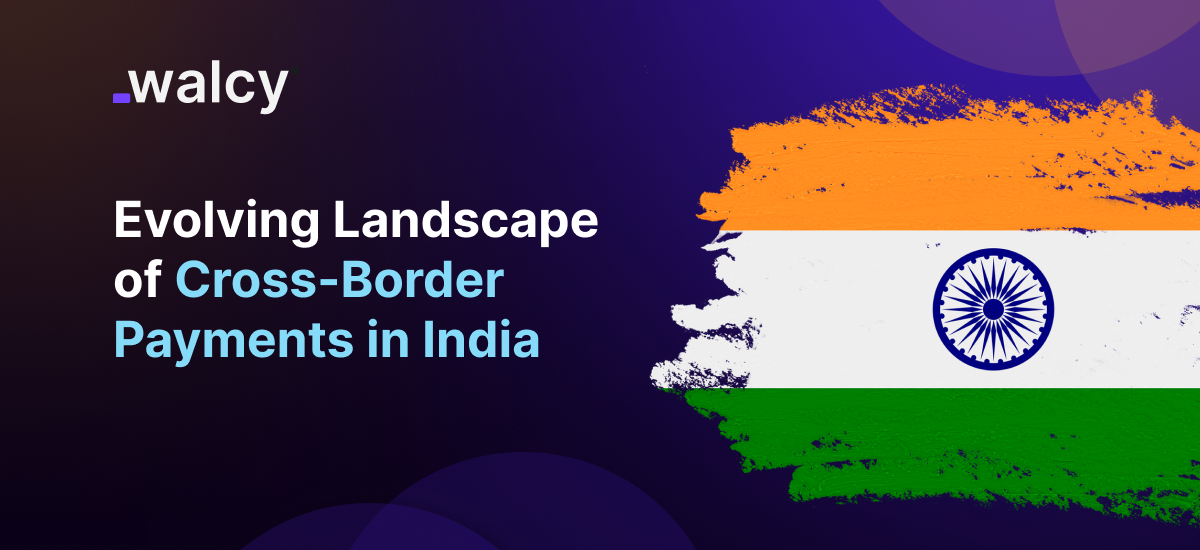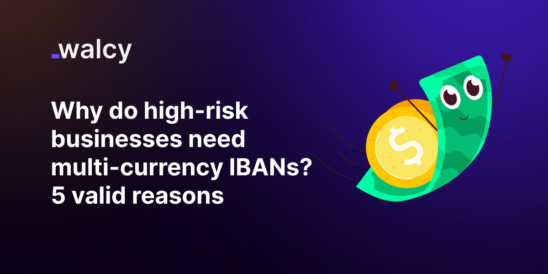The rising interdependence of the global economy has led to a demand for cross-border payment systems that are speedy, safe, compliant, and effective. India, one of the world’s largest economies, has a long history of using cross-border payments, and the nation has made it a top goal to create newer and better payment infrastructure for both internal and international commerce.
Governmental efforts to upgrade cross-border payments in India have always been proactive in response to the fast globalization and advent of digital technology. The development of organizations such as the RBI and the Liberalized Remittance Scheme (LRS) has paved the way for regulating and facilitating cross-border transactions.
Unified Payments Interface (UPI) adoption has changed domestic payments; nevertheless, an international counterpart has not yet been achieved. India is driving towards a digital economy.
Indian fintech companies are working towards integrating secure cross-border payment processes. Since cross-border transactions require integration with another country’s regulations and harmonization of payment infrastructure, India has struggled to develop a regional payment system with its global giant neighbor, China. Furthermore, India’s emphasis on compliance with global AML and CTF regulations is commendable, underscoring its commitment to inculcating a sense of trust and confidence in Indian payment transactions from other countries.
India will undoubtedly become an essential component in the global financial ecosystem as its cross-border payment infrastructure develops and becomes more connected with several significant economies. This is due to the country’s enormous natural richness, intellectual edge, and size.
In addition to strengthening the nation’s economic expansion, the current advancements have the potential to improve the stability and effectiveness of the world financial system.
Cross-border Payments Landscape in India
There are several varieties of transactions in the cross-border payments ecosystem, including business-to-business (B2B), business-to-person (B2P), person-to-business (P2B), and person-to-person (P2P) payments.
The Rupee Drawing Arrangement (RDA) is a framework between the RBI and other central banks to facilitate bilateral trade and remittance flows. Traditionally, cross-border payment transfers, also known as remittances, have been processed through established payment processing networks or channels like SWIFT, correspondent banking, national or international postal networks, and the Money Transfer Service Scheme (MTSS), a personal remittance system for beneficiaries in India.
Conversely, despite the availability of conventional remittance methods that have been tried and tested, cross-border small-value transactions have low appeal due to high transaction fees, complexity in navigating payment regulations, and extensive compliance documentation requirements. The Indian diaspora abroad is largely influenced by the per-transaction cost and speed of delivery when choosing a payment method.
In recent years, FinTech companies have been leading cross-border payments by recognizing and capitalizing on the pain points still evident in conventional remittance models, leveraging digital automation technology to offer a more streamlined cross-border remittance experience.
Key Remittance Statistics of India
As per data from 2023, India was the top recipient of remittances, receiving $125 billion, a 12.3% increase from 2022. The inflow primarily comes from strong labor markets in high-income countries like the United States, United Kingdom, and Singapore, which collectively contribute 36% of India’s total remittances.
Outward remittances from India have also been growing steadily, with $27.14 billion remitted under the Liberalised Remittance Scheme (LRS) in the financial year 2022-23. This growth reflects increasing expenditures on education, travel, and maintenance of relatives abroad.
There is a prediction that remittance flow into India in 2024 will remain strong, with projections indicating a potential increase to $135 billion.
Key Challenges
With expansive reach in the global market, financial transactions that transcend borders are inevitable for the Indian economy and are essential to facilitate global trade, remittances, and international investments. However, cross-border payments are indeed complex, requiring consideration of differences in time zones, currencies, and regulatory frameworks.
Read about: Cross-Border Payment Solutions: Past vs. Present vs. Future
These factors induce several layers of payment friction, such as unavoidable delays, high transaction fees, inability to check payment status, and uncertainty around payment fulfillment. Here are some of the key challenges often associated with cross-border payments in India:
High Costs and Fees
The cost of cross-border payments varies widely due to factors such as transaction amount, payment method, destination country, and fluctuating exchange rates. Currency conversion fees and unfavorable exchange rates are the main culprits behind high costs, and banks’ added margins over exchange rates further inflate these costs.
Furthermore, in payment systems like SWIFT, intermediaries are involved, and each intermediary charges certain fees, making transactions expensive. Typically, fees range from 0.4% to 20% of the transaction amount.
You shall like: Saving Money on Cross-Border Payments: All You Need to Know
Speed
Real-time payments for domestic transactions have been largely improved in India, thanks to the Unified Payment Interface (UPI), which allows near-instant transactions from person to person. However, there are no alternatives for instant cross-border transfers, and therefore delays are common. These delays are mostly due to incomplete remittance information and the need for anti-money laundering and fraud checks.
Each institution has its risk mitigation processes, which can vary widely. By embracing digitalization and standardizing the sharing of information across borders, payment processing times could be significantly reduced.
Read about: What Are The Penalties For Money Laundering? Quick Facts
Regulatory Compliance and Related Complexities
Another overlooked complexity of managing settlements and a major challenge is adhering to various regulations, which often drives up costs. To ensure adherence to KYC, AML, and Counter-Terrorism Financing (CTF) rules, India’s strict regulatory frameworks are administered by the Reserve Bank of India (RBI) and the Foreign Exchange Management Act (FEMA).
Due to the stringent regulatory requirements that must be followed for cross-border transactions, payment systems are vulnerable to frequent audits, upgrades, and payment mistakes as well as delays brought on by manual examination. These factors can result in costly fines and complicated multi-jurisdictional compliance.
Therefore, navigating through the regulatory complexity can be challenging even for seasoned remitters and banking institutions. Cross-border payments are governed by the regulatory frameworks of several countries, including the country of origin of the transfer, the destination, and other intermediary jurisdictions, due to the absence of uniform legislation across jurisdictions.
Every nation has its own set of regulations set out to keep customers safe, preserve consumer information, and stop illegal and fraudulent activity.
For example, in India, AML, KYC, and transaction limitations are governed by the Reserve Bank of India (RBI). The European SEPA system, Monetary Authority of Singapore (MAS) and PSD2 regulations serve as fraud defense measures, providing a safer financial system
Cross-border payments would become more effective and economical if AML and KYC procedures were standardized internationally and unified legislation were developed that applied to all nations.
Read about: International Payment Fraud: Ultimate Guide For Businesses.
Messaging Format
There’s no denying that various financial organizations and payment systems in India employ distinct communication formats. Cross-border payments in India mostly use the highly dependable SWIFT MT103 messaging protocol, which has a restricted capacity for carrying data.
This limitation means that any additional information needed for processing the payment must be sent separately via email. Interoperability issues are caused by the fact that certain payment platforms use their formats, while others utilize the ISO 8583 standard, which is mainly used for credit card transactions.
Adopting the ISO 20022 standard would help India resolve this issue since it offers more detailed and comprehensive messages while also reducing integration difficulties.
UPI as a Cross-border Alternative
UPI is a gift to the international community and proof that domestic transfers can be simple, fast, and cost-effective solutions for peer-to-peer and peer-to-business transfers. Since UPI is India’s flagship payment system, it is a natural progression to revamp it and explore it as a cross-border payment alternative. Due to its instant nature, low transaction costs, and ease of use, international linkages with other payment systems in other countries have been carried out.
For instance, UPI is linked with Singapore’s PayNow system and can now facilitate instant, low-cost, and low-value transfers. UPI also supports foreign nationals’ international mobile numbers to be linked with their bank accounts, allowing them to use UPI while they are in India. Collaborative efforts are underway with international banks to allow UPI-based transactions to send money to India and create new financial transaction channels.
However, there are several challenges with UPI, including interoperability with global systems and regulatory compliance. Since it must be interoperable with other global payment networks, new technical adaptations are necessary, and partnerships with foreign payment networks are complex. Additionally, UPI transactions must meet AML, CTF, and FX controls while being compliant with global regulations, requiring strong relationships and trade agreements among the participating nations.
Read more: CIPS: Cross-Border Interbank Payment System. Chinas Alternative to SWIFT
Future of Payments in India
Cross-border transactions in India are poised for radical transformation, led by technology adoption, regulatory reforms, and harmonization with global payment networks. The future will likely see developments with Distributed Ledger Technologies (DLT), adoption of the ISO 20022 messaging format, and reductions in remittance costs. Moreover, the introduction of Central Bank Digital Currencies (CBDCs) has the potential to facilitate seamless transactions without the need for traditional banking intermediaries.
Conclusion
The context of cross-border payments is rapidly evolving due to technological advancements, regulatory harmonization in a multi-country setting, and a growing integration of the Indian payment system with global financial networks. By utilizing UPI, DLT, and CBDCs, issues like transaction prices, turnaround times, and regulatory compliance would be addressed, establishing India as a major participant in the global financial ecosystem.
India will firmly establish its position as a facilitator of efficient cross-border payments and make contributions to the local and global economies in the years to come as it seeks to solve these concerns and improve its cross-border payment infrastructure and laws.
Do follow us on Facebook and LinkedIn, to stay connected with us.



